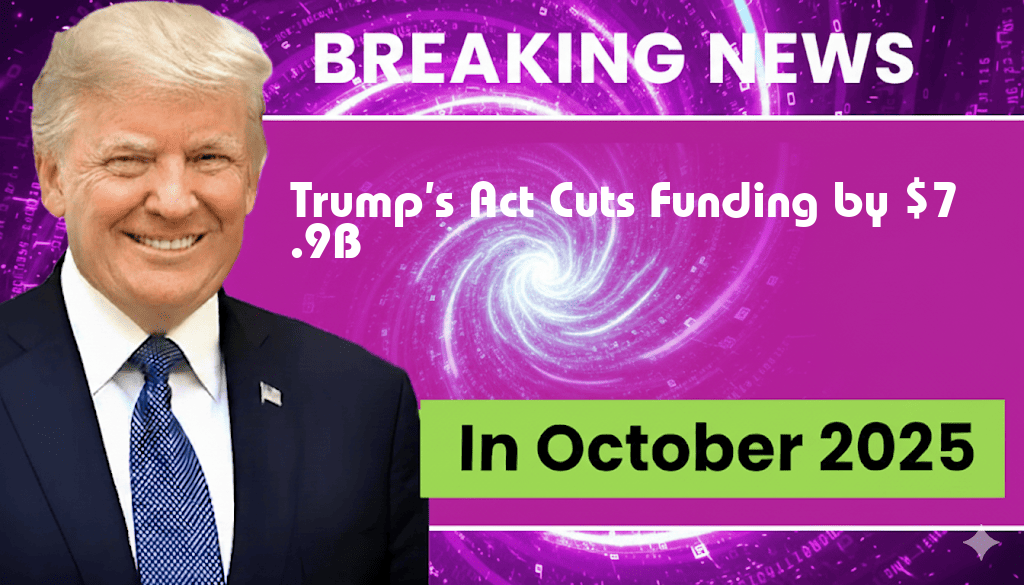In a significant shift in budgetary policy, former President Donald Trump’s Rescissions Act has led to the cancellation of approximately $7.9 billion in federal funding. This move, which aims to streamline government expenditures, has been met with mixed reactions from lawmakers and advocacy groups alike. The funding cuts primarily target various programs across multiple sectors, including education, healthcare, and infrastructure. Advocates for these programs argue that such drastic reductions could have lasting impacts on essential services, while supporters of the act emphasize the importance of fiscal responsibility. As the political landscape shifts, the implications of these cuts may resonate across the upcoming legislative sessions.
Details of the Rescissions Act
The Rescissions Act, which was implemented as part of a broader effort to reduce the federal deficit, outlines specific budgetary cuts aimed at reallocating funds to more pressing needs. The funds rescinded were originally earmarked for programs that proponents argue are vital for community development and public welfare.
Key Areas Affected
- Education: Funding for various educational initiatives, including grants for low-income students, has been significantly reduced.
- Healthcare: Public health programs, including those aimed at combating opioid addiction and mental health services, face substantial cuts.
- Infrastructure: Investments in transportation and public works projects have also been impacted, raising concerns about long-term economic growth.
Reactions from Lawmakers
The response to the Rescissions Act has been polarized, reflecting broader divisions in Congress. Supporters of the act, largely from the Republican Party, argue that reducing government spending is essential for economic stability. Representative John Smith (R-CA) stated, “This act represents a necessary step toward responsible governance and prioritizing taxpayer dollars.”
Conversely, Democratic lawmakers and some moderate Republicans have expressed concern over the potential fallout from the cuts. Senator Jane Doe (D-NY) remarked, “These programs are not just numbers on a spreadsheet; they represent real people whose lives will be adversely affected by these decisions.”
Impact on Communities
The effects of the funding cuts are expected to be felt across various communities, particularly in underserved areas. Many local organizations rely on federal funding to provide essential services, and reductions could lead to layoffs, program closures, and diminished access to critical resources.
Case Studies of Affected Programs
| Program | Original Funding | Rescinded Amount | Impact |
|---|---|---|---|
| Low-Income Student Grants | $1 billion | $500 million | Reduced access to education for low-income families |
| Opioid Addiction Programs | $800 million | $300 million | Less support for addiction recovery services |
| Transportation Infrastructure | $2 billion | $1.2 billion | Delayed public transport projects |
Future Implications
As the political debate over fiscal policy continues, the long-term implications of the Rescissions Act remain uncertain. Analysts suggest that the cuts could hinder economic recovery, especially in regions already struggling with unemployment and underfunded services. Furthermore, as advocacy groups mobilize to challenge these reductions, there may be calls for legislative action to restore funding to critical programs.
For more information on the implications of the Rescissions Act, you can visit Wikipedia or read analyses on Forbes.
The political ramifications of these funding cuts may play a significant role in shaping the agenda for the upcoming midterm elections, as constituents voice their concerns regarding the impacts on their communities. As debates unfold, the balance between fiscal responsibility and social welfare will remain a critical issue for lawmakers and citizens alike.
Frequently Asked Questions
What is Trump’s Rescissions Act?
Trump’s Rescissions Act is legislation aimed at reducing federal spending by rescinding previously appropriated funds. The act seeks to eliminate unnecessary expenditures and redirect resources.
How much funding is being reduced by the Rescissions Act?
The Rescissions Act proposes a total funding reduction of $7.9 billion, impacting various federal programs and agencies.
What types of programs are affected by the funding cuts?
The cuts primarily affect domestic programs, including education, health care, and various federal initiatives that were previously allocated funds but are deemed no longer necessary.
What is the purpose of implementing rescissions?
The purpose of implementing rescissions is to promote fiscal responsibility by ensuring that taxpayer dollars are not wasted on programs that are ineffective or no longer needed.
How does Congress respond to the Rescissions Act?
Congress has the authority to review and approve the Rescissions Act. Responses may vary, with some members supporting the cuts for budgetary reasons, while others oppose them due to potential negative impacts on essential services.
